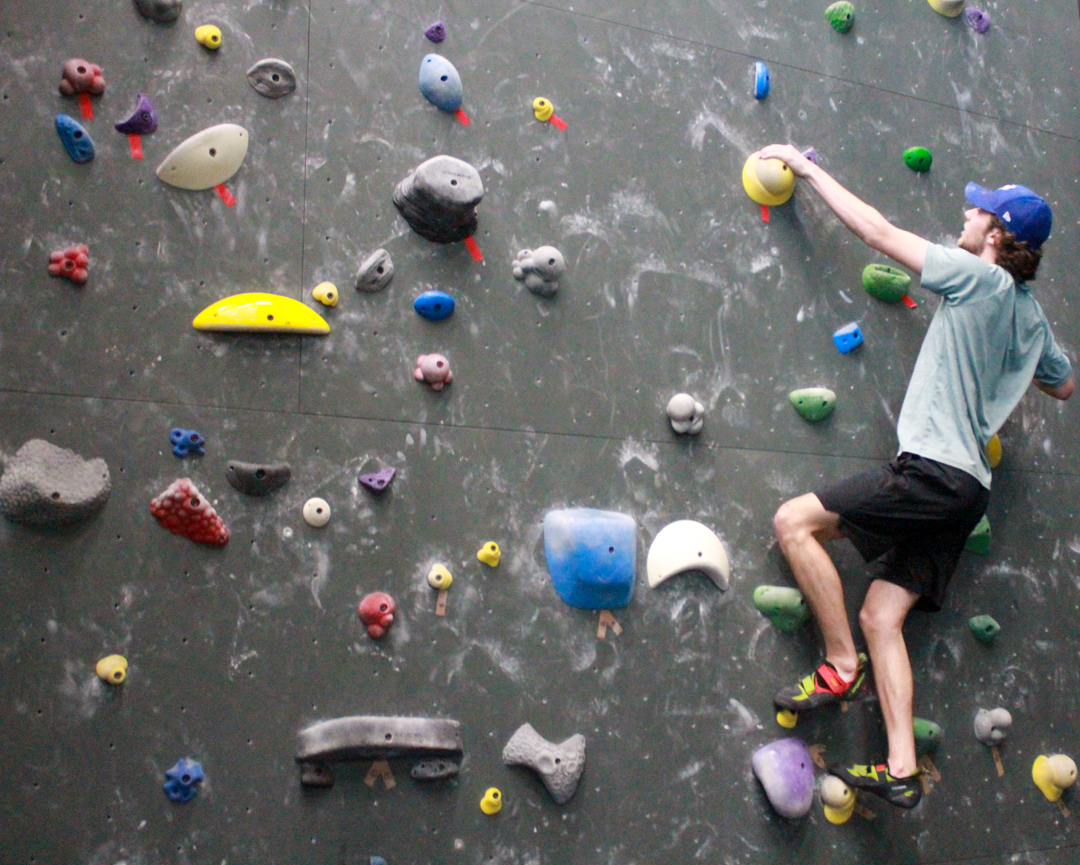Normally, when you hear the word competition, thunderous crowds come to mind. You think of pressure. Stress. Rivalries. Egos clashing. Trophies. Medals. Glory.
Not here. Not at the climbing and bouldering walls inside the ARC.
It was the opposite — chill. Even carefree. But not in a way to suggest recklessness. More like assured. As if they’ve done this a thousand times. They knew what they were doing and didn’t need to prove themselves.
It was almost professional.
New and experienced climbers signed up for the climbing competition, which happened between March 27 and March 31.
At the top-roping wall, the climbers reached inside their chalk bags attached to their harnesses and coated their palms. Before their hands and feet scaled the wall, it was their eyes that travelled to the top. Then they began their ascent.
They scurried up the wall methodically, carefully choosing which climbing hold to grip.
They executed various holds like “jugs” (easy to grip, like a jug of water), “under clings” (upside down jugs), “slopers” (hard to hold, no edges for your fingers to pull on) or even “crimps” (come in all shapes, distinct edges that restrict your grip to the first two knuckles or the fingertips). Some climbers successfully pulled off a “dyno” (dynamic movement that uses momentum to reach the next hold, making you look like Spider-Man).
When a climber reached the peak, they tapped the top hold and then rappelled down. Occasionally, the climbers lost their grip or footing and slipped, but it wasn’t a huge deal for them. It’s part of the sport. It’s how they learn.
They climbed and tapped and slipped and rappelled and repeated the process.
Across from them, with no harnesses, climbers tested their grip on the bouldering wall using the same variety of techniques but having to climb half the height. After they “topped out” (climbed onto the top of the boulder), they climbed down the back of the wall and reappeared seconds later for another attempt.
Prizes went to the top five climbers in men’s and women’s categories and they included a sample of liquid chalk, a shaker bottle and a T-shirt.
Maya Croft, who is in her first year of becoming an occupational therapy assistant and physiotherapy assistant, was convinced by her brother and started to climb.
“He said, ‘Oh, you’ll love climbing. Do it!’ And also, it’s here, so why not try it? If I don’t like it then there’s this entire gym here to use,” Croft said at the base of the bouldering wall.
Croft entered the competition to see if she could push herself to do things outside of her orbit.
As did Owen Willoughby-Richards, a second-year business management and entrepreneurship student who considers himself an intermediate climber.
“I like seeing progression and getting better. Coming and doing a problem I’ve not done before or can’t do and completing it eventually,” Richards said.
Richards appreciates the accessibility and free cost of using the walls in the ARC and is now reaching new heights at Altitude Gym.
“It’s a great way to keep fit,” he said. “It’s just really good fun.”
Fun is the reason why Mason Gauthier, a first-year student in building construction, decided to compete and wants to make a career out of climbing.
“Friends invited me years back. I found out it was something I was good at and it stuck ever since,” Gauthier said.
Gauthier won the men’s top spot and Megan Fuller won first place in the women’s group.


